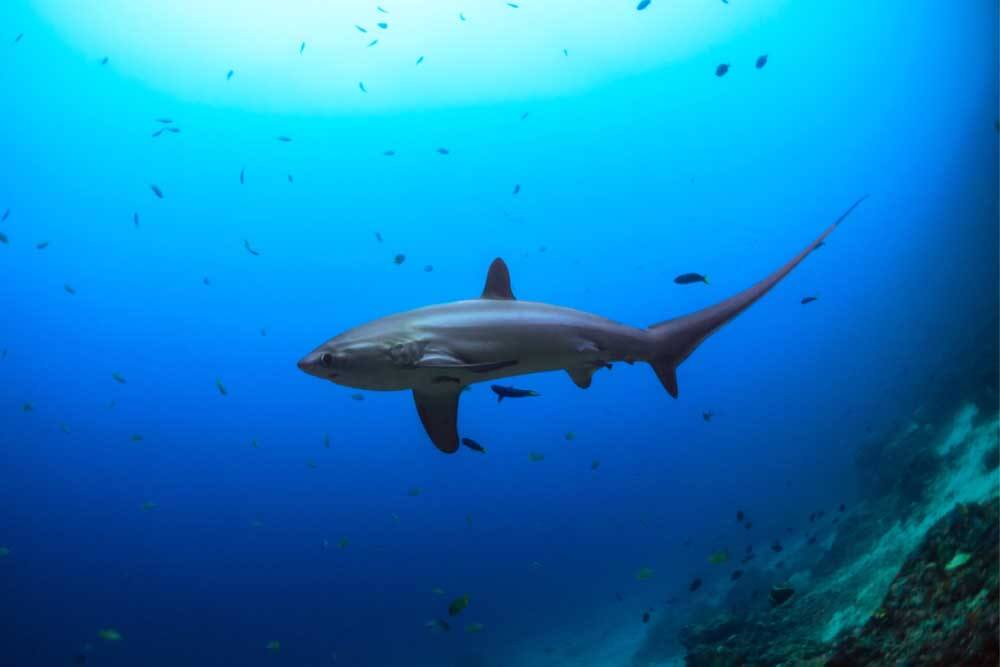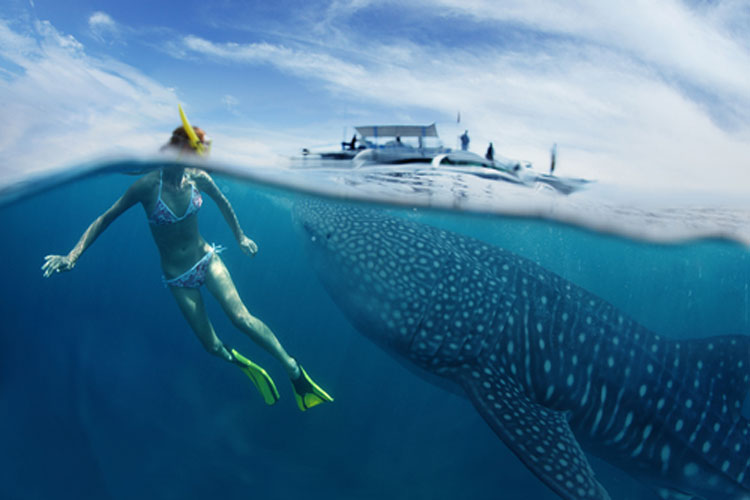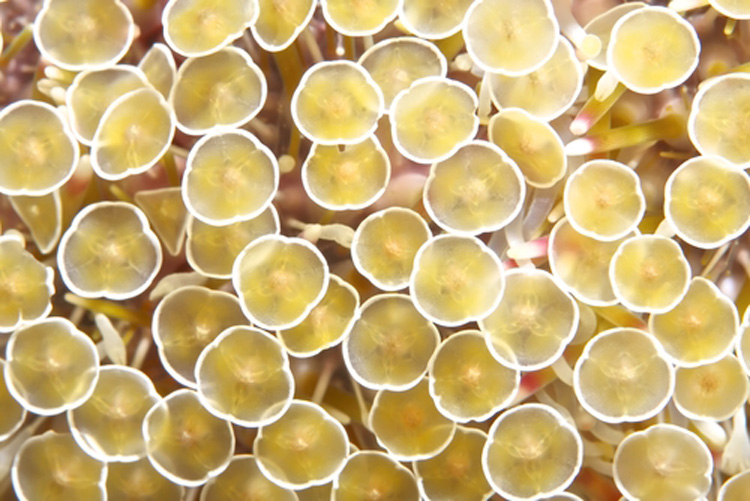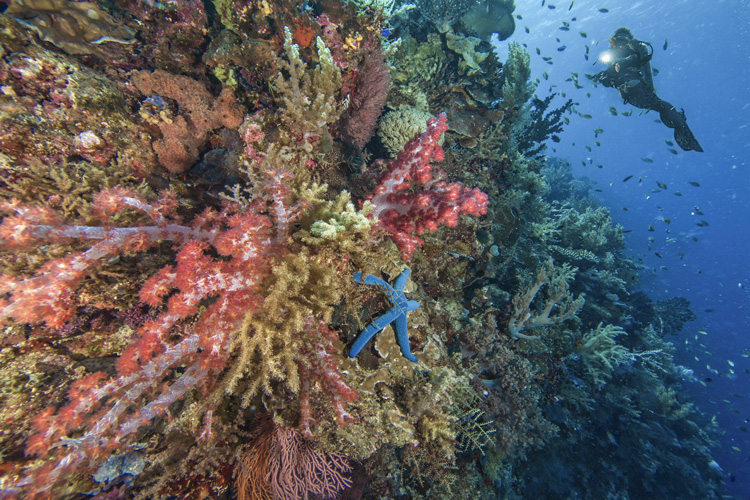
From the giant whale shark to the tiny pygmy seahorse. From vast schools of snappers to solitary thresher sharks. From the monochrome majesty of the ever-moving manta to the colourful dance of the mandarinfish. The Philippines has it all. Reefs teeming with life. Deep channels funnelling nutrient-rich waters brimming with pelagic life. Add the great viz and experienced dive crews and you have the perfect place to encounter the marine world
Whale sharks (Rhincodon typus)
This slow-moving filter feed is the largest fish in the sea – one individual was scientifically measured at 12.65m (41.50 ft) and it is not uncommon for specimens to be seen by divers over 10m in length. Little is known about this wanderer of the tropical oceans – they feed on plankton and other tiny creatures, can live to around 70 years and migrate over vast tracts of the ocean. The Philippines is one of the most reliable spots in the world to encounter these gentle giants.
Pelagic thresher shark (Alopias pelagicus)

There are three species of threshers (the pelagic, the common and the big-eye) and they grow to about 6m in length – half of which is their scythe-like tail. They are not often seen by divers as they are nocturnal and spend most of their time in deep water, but on the small island of Malapascua, just off the northern tip of Cebu, is Monad Shoal where early in the morning a regular stream of threshers visit a cleaning station. Threshers feed on small fish which are corralled and sometimes stunned by swipes of the greatly elongated upper lobes of their caudal fins. They are known to leap clear of the ocean.
Giant manta (Mobula birostris)
Mantas are perpetually on the move – these giant pelagic rays must swim to both breathe and feed and they can only swim in a forward direction. The giant manta ray can reach a wingspan of seven metres and weight in excess of 1,400 kilos. They can be found in most tropical and sub-tropical waters. In some areas such as the Philippines large aggregations can be found visiting cleaning stations or descending on planktonic blooms to feed.
Mandarinfish (Synchiropus splendidus)

The mating ritual of this small, brightly coloured member of the dragonet family is one of the star turns of the reef. At sunset groups of three or five females gather and search the reef for likely males. On finding a mate they join belly to belly and slowly rise about a metre above the reef to release a cloud of eggs and sperm. A great start to a night dive! The mandarinfish are one of only two vertebrate species known to have blue colouring because of cellular pigment, the other being the closely related psychedelic mandarin (S. picturatus).
Warty frogfish (Antennarius maculatus)

These masters of disguise blend into their surroundings on the reef and patiently wait to ambush prey attracted to a lure which dangles from its upper lip. It sucks in its victims with astonishing speed: six-thousandths of a second and the unsuspecting small fish is gone, an animal kingdom record. It mostly moves around the reef using its pectoral and ventral fins to ‘walk’, again setting an all-comer record as the slowest recorded gallop. When it does venture into open water it uses jet propulsion to move, expelling water from its gills – another record for the slowest jet engine!
Pygmy seahorses (Hippocampus bargibanti/denise)
All but one of the seven species of pygmy seahorses so far discovered can be found in the Philippines. They have one of the smallest territories of any fish rarely moving further than the dimensions of a small plate the whole of their adult lives. Males get pregnant and give birth to 10 to 12 young after 14 days of gestation. They feed on tiny crustaceans.
Nudibranchs
More coral reef dwelling species of nudibranchs can be found in the Philippines than nearly anywhere else on the planet. These carnivorous hermaphrodites are lurking in nearly every nook and cranny of the reef like colourful gems to delight the keen-eyed diver.
Corals
The 7,000+ islands of the Philippines are surrounded by more than 26,000 square kilometres of coral reefs. Nearly 600 different species of reef-building coral have been identified in the archipelago and the reefs are festooned with a stunning array of soft corals. For divers the varied topography with dramatic walls and tumbling coral gardens makes this some of the most exhilarating reefs going. Action-packed drift dives past living walls of coral. Gentle safety stops spent exploring shallow reefs exploding in colour. Overhangs dripping with soft corals. This is coral diving at its very best.
IN ASSOCIATION WITH THE PHILIPPINES TOURIST OFFICE
























